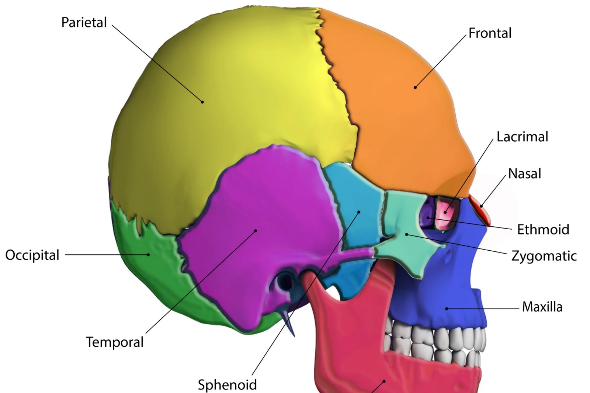Feel The Rhythm!
Posted Sep 10, 2021 at 14:12
Posted Sep 10, 2021 at 14:12

Did you know your skull is made up of multiple different bones? And they all move? Everyone knows that a baby's skull is very fragile as it is still developing, but most people don't realise that even as adults the bones in our skull aren't fully fused.
It might surprise you to know that an adult skull actually contains a total of 22 bones. 8 cranial bones, and 14 facial skeletal bones. They�re joined together by a series of sutures that allow the skull to expand and contract as we breathe. These movements are very subtle, but incredibly important, as they help with the flow of cerebrospinal fluid around your brain and spinal cord.
Cerebrospinal fluid plays an important role in overall health of the brain and spinal cord. It allows the brain to float inside the skull, acting as a shock absorber against sudden or violent movements of the head. It also transports essential nutrients hormones, as well as removing metabolic waste and toxic substances. The craniosacral rhythm works at a rate of around 6-12 cycles per minute, and acts as a pump for the cerebrospinal fluid to be transported throughout the dural membrane that encloses the brain and spinal cord.
There are lots of things that can affect the craniosacral rhythm. Recent traumas, particularly to the head, spine or pelvis can cause temporary disruption, and if left untreated, the changes can start to become more permanent. In some cases, trauma from birth can lead to alterations in the way the skull forms and moves, meaning that the issue may have been undetected but present for many years, decades even! Other times it can simply be a change that occurs over time, due to poor spinal biomechanics and years worth of poor posture, causing a breakdown in the whole system.
The craniosacral rhythm has two distinct phases. During the flexion stage, the bones of the cranium expand slightly and the lowest part of your sacral bone moves anteriorly. In the extension phase the opposite happens, and the cranial bones contract slightly and the sacral apex moves posteriorly. This rhythm continuously pumps the cerebrospinal fluid, so any disruption can alter the flow.
With every client we see we get hands on with the skull to ensure that everything is moving as it should, with particular focus on the 8 cranial bones. If we identify that a particular area is not moving correctly, we are able to assist the bone through the range it should be moving in, manually aiding the pumping of cerebrospinal fluid and helping the previously dysfunctional segment to move appropriately again.
If you want to find out if your craniosacral rhythm is functioning correctly, or just want to learn more about how it might be impacting you, why not book in for a free discovery visit with one of our clinicians!